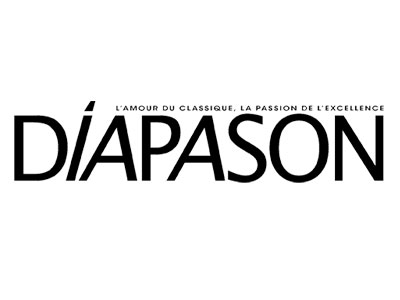
Alondra de la Parra introduces Latin American Music in the Philarmonie de Paris.
Last weekend, the Philarmonie de Paris was transported to South and Central America, thanks to the young Mexican conductor Alondra de la Parra who we first met two years ago at Salle Pleyel.
She performed the following repertoire: Milhaud (Le Bœufsur le toit), Piazzolla (Double Concerto for guitar and bandoneon and Oblivion transcribed by Denis Plante for solo guitar and bandoneon) Moncayo (Huapango) and Revueltas (La Noche de los Mayas ) on the first night; Revueltas again (the brilliant Sensemayá), Rodrigo (Concierto de Aranjuez), Villa-Lobos (BachianaBrasileira No. 5), Costa (Concerto fronteira, a new creation), Márquez (his Bolero and Danzón No. 2) the following day.
Intoxicating rhythms and sensations
A repertoire as rare as this one in our country immediately makes for a joyous mood. In anticipation of a happy event, de la Parra opened the festivities with a “Milhaud beef” (similar to a tournedos Rossini) that was alert, smart and full of colours. De la Parra cultivates rhythmic vivacity and clarity, richness of colours, subtly differentiated atmospheres, equally apparent in the great Huapango and Sensemayá – subtitled “chant to kill a snake” –as well as the grandiose Moncayo and Revueltas. In these works which she knows by heart, rhythm and percussion occupy a central role and de la Parra conjures visions that are both haunting (narratives, mysteries) and delicate (but never rigid, with arm movements that are ever persuasive) but at the same time, balanced.
The irresistible Danzón No. 2, introduced by clarinet Pascal Moraguès is restored to its initial sobriety – Gustavo Dudamel, who popularized it with his Venezuelans, somewhat “customized” the percussion part! De la Parra turned La Noche de los Mayas into an orgiastic ceremony in crescendo with the fantastic percussionists of Orchestre de Paris enjoying it to their hearts content, largely reinforced by the extra players and even colleagues from the Orchestre National (a good fifteen in all).
Yamandu Costa, brilliant guitarist
The third piece Noche de Yucatán, brought us the muted roar of the snail and the huge seashell – the Ambassador of Mexico in France said to his compatriot that he could not remember a more beautiful interpretation of this masterpiece. But we must also acknowledge the great Brazilian guitarist Yamandu Costa, which we already heard at Chatelet and Pleyel with Kristjan Järvi. This is what you would call natural, a thoroughly original artist who gives a distinctive tone to everything he touches: he is a fascinating partner to Richard Galliano, always evocative in the Piazzolla, which is so intimately appropriate. Especially to the Concierto de Aranjuez, Costa lends a highly personal vision, whose breaths, rising upturns and dazzling contrasts are reminiscent of a flamenco guitarist. But what delicacy also in the pianos! De la Parra is careful never to restrain this singular breathing (a
salute also to the magnificent solo English horn Gildas Prado). Costa’s own Concerto fronteira is written in his image: free, untamed, of changing moods, sometimes with almost borderline characteristics. As for the solo he gave as an encore, throwing sparks and lightning, whistling, singing, striking his guitar, and ending it by jumping up … he turned the hall upside down.
Finally, a salute to the bright vocal purity of Omo Bello in Villa-Lobos. De la Parra gave Marquez as encore on first night and as a cross salutation, Moncayo on the second. Reviewing this weekend of intoxicating rhythms and sensations, we would have listened to both of the pieces three times over with equal pleasure.
Philarmonie de Paris, 13th and 14th.